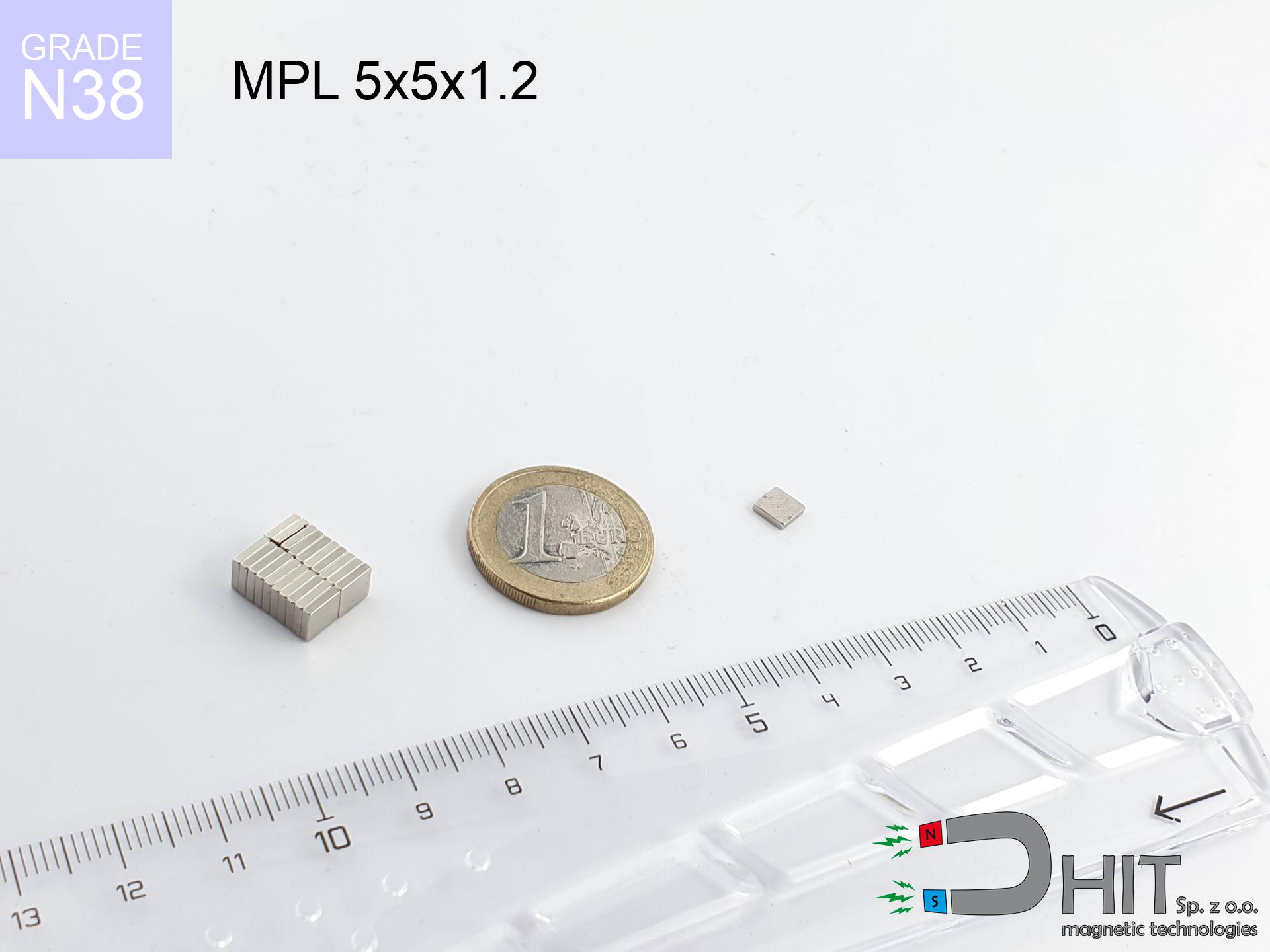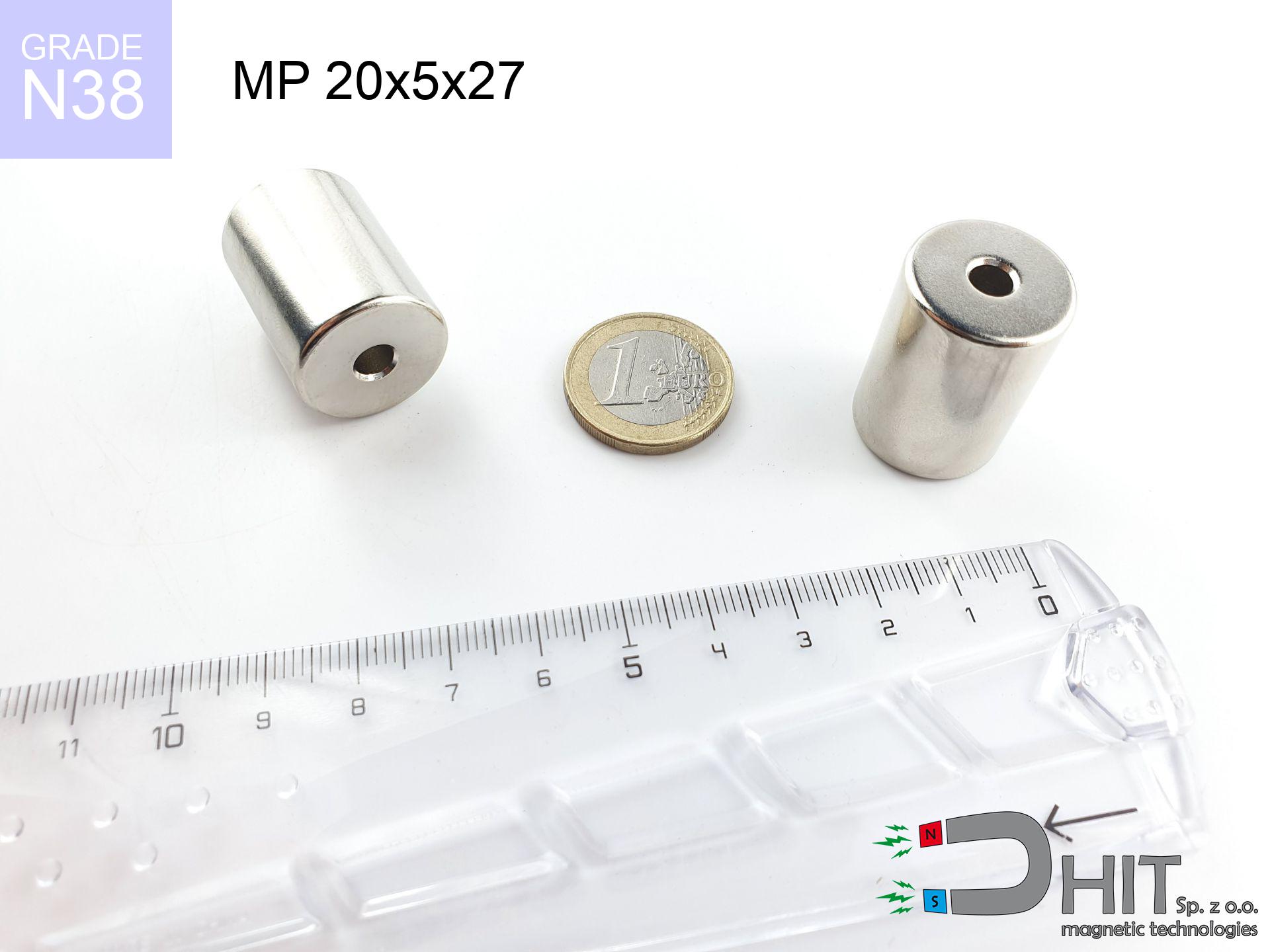UMT 12x20 white / N38 - board holder
board holder
Catalog no 230265
GTIN/EAN: 5906301814283
Diameter Ø
12 mm [±1 mm]
Height
20 mm [±1 mm]
Weight
3.5 g
Coating
[NiCuNi] Nickel
1.894 ZŁ with VAT / pcs + price for transport
1.540 ZŁ net + 23% VAT / pcs
bulk discounts:
Need more?Need help making a decision?
Contact us by phone
+48 22 499 98 98
if you prefer get in touch using
request form
the contact page.
Specifications along with shape of a neodymium magnet can be reviewed with our
force calculator.
Orders submitted before 14:00 will be dispatched today!
UMT 12x20 white / N38 - board holder
Specification / characteristics UMT 12x20 white / N38 - board holder
| properties | values |
|---|---|
| Cat. no. | 230265 |
| GTIN/EAN | 5906301814283 |
| Production/Distribution | Dhit sp. z o.o. |
| Country of origin | Poland / China / Germany |
| Customs code | 85059029 |
| Diameter Ø | 12 mm [±1 mm] |
| Height | 20 mm [±1 mm] |
| Weight | 3.5 g |
| Coating | [NiCuNi] Nickel |
| Manufacturing Tolerance | ±1 mm |
Magnetic properties of material N38
| properties | values | units |
|---|---|---|
| remenance Br [min. - max.] ? | 12.2-12.6 | kGs |
| remenance Br [min. - max.] ? | 1220-1260 | mT |
| coercivity bHc ? | 10.8-11.5 | kOe |
| coercivity bHc ? | 860-915 | kA/m |
| actual internal force iHc | ≥ 12 | kOe |
| actual internal force iHc | ≥ 955 | kA/m |
| energy density [min. - max.] ? | 36-38 | BH max MGOe |
| energy density [min. - max.] ? | 287-303 | BH max KJ/m |
| max. temperature ? | ≤ 80 | °C |
Physical properties of sintered neodymium magnets Nd2Fe14B at 20°C
| properties | values | units |
|---|---|---|
| Vickers hardness | ≥550 | Hv |
| Density | ≥7.4 | g/cm3 |
| Curie Temperature TC | 312 - 380 | °C |
| Curie Temperature TF | 593 - 716 | °F |
| Specific resistance | 150 | μΩ⋅cm |
| Bending strength | 250 | MPa |
| Compressive strength | 1000~1100 | MPa |
| Thermal expansion parallel (∥) to orientation (M) | (3-4) x 10-6 | °C-1 |
| Thermal expansion perpendicular (⊥) to orientation (M) | -(1-3) x 10-6 | °C-1 |
| Young's modulus | 1.7 x 104 | kg/mm² |
Material specification
| iron (Fe) | 64% – 68% |
| neodymium (Nd) | 29% – 32% |
| boron (B) | 1.1% – 1.2% |
| dysprosium (Dy) | 0.5% – 2.0% |
| coating (Ni-Cu-Ni) | < 0.05% |
Environmental data
| recyclability (EoL) | 100% |
| recycled raw materials | ~10% (pre-cons) |
| carbon footprint | low / zredukowany |
| waste code (EWC) | 16 02 16 |
See also proposals
Strengths as well as weaknesses of Nd2Fe14B magnets.
Advantages
- Their power is maintained, and after approximately 10 years it drops only by ~1% (according to research),
- They are noted for resistance to demagnetization induced by presence of other magnetic fields,
- By covering with a shiny layer of silver, the element gains an professional look,
- Magnets exhibit very high magnetic induction on the working surface,
- Through (appropriate) combination of ingredients, they can achieve high thermal strength, enabling functioning at temperatures reaching 230°C and above...
- Thanks to the potential of accurate molding and customization to individualized requirements, NdFeB magnets can be manufactured in a wide range of geometric configurations, which amplifies use scope,
- Huge importance in modern technologies – they are commonly used in magnetic memories, brushless drives, advanced medical instruments, and multitasking production systems.
- Compactness – despite small sizes they provide effective action, making them ideal for precision applications
Limitations
- To avoid cracks upon strong impacts, we suggest using special steel housings. Such a solution protects the magnet and simultaneously increases its durability.
- Neodymium magnets demagnetize when exposed to high temperatures. After reaching 80°C, many of them experience permanent drop of strength (a factor is the shape as well as dimensions of the magnet). We offer magnets specially adapted to work at temperatures up to 230°C marked [AH], which are very resistant to heat
- Due to the susceptibility of magnets to corrosion in a humid environment, we suggest using waterproof magnets made of rubber, plastic or other material immune to moisture, when using outdoors
- We recommend a housing - magnetic mount, due to difficulties in realizing nuts inside the magnet and complicated forms.
- Possible danger to health – tiny shards of magnets can be dangerous, when accidentally swallowed, which gains importance in the context of child health protection. Additionally, small components of these products are able to disrupt the diagnostic process medical in case of swallowing.
- Higher cost of purchase is one of the disadvantages compared to ceramic magnets, especially in budget applications
Lifting parameters
Maximum lifting force for a neodymium magnet – what it depends on?
- using a plate made of low-carbon steel, serving as a circuit closing element
- whose thickness is min. 10 mm
- characterized by smoothness
- with total lack of distance (without impurities)
- for force applied at a right angle (pull-off, not shear)
- at ambient temperature approx. 20 degrees Celsius
Key elements affecting lifting force
- Distance – the presence of foreign body (rust, dirt, air) acts as an insulator, which reduces capacity steeply (even by 50% at 0.5 mm).
- Load vector – maximum parameter is available only during pulling at a 90° angle. The resistance to sliding of the magnet along the plate is usually several times lower (approx. 1/5 of the lifting capacity).
- Steel thickness – insufficiently thick steel causes magnetic saturation, causing part of the power to be lost into the air.
- Plate material – mild steel attracts best. Alloy steels lower magnetic permeability and holding force.
- Surface quality – the smoother and more polished the surface, the larger the contact zone and higher the lifting capacity. Roughness acts like micro-gaps.
- Heat – neodymium magnets have a sensitivity to temperature. At higher temperatures they are weaker, and at low temperatures gain strength (up to a certain limit).
Lifting capacity testing was performed on a smooth plate of suitable thickness, under a perpendicular pulling force, whereas under parallel forces the lifting capacity is smaller. In addition, even a slight gap between the magnet’s surface and the plate lowers the load capacity.
Skin irritation risks
Allergy Notice: The nickel-copper-nickel coating contains nickel. If an allergic reaction appears, cease handling magnets and wear gloves.
This is not a toy
Neodymium magnets are not toys. Swallowing a few magnets can lead to them attracting across intestines, which constitutes a direct threat to life and necessitates urgent medical intervention.
Precision electronics
Remember: neodymium magnets produce a field that interferes with sensitive sensors. Maintain a safe distance from your phone, device, and navigation systems.
Pinching danger
Large magnets can smash fingers instantly. Never place your hand betwixt two attracting surfaces.
Protective goggles
Neodymium magnets are ceramic materials, which means they are prone to chipping. Clashing of two magnets will cause them shattering into shards.
Warning for heart patients
Health Alert: Neodymium magnets can turn off heart devices and defibrillators. Stay away if you have medical devices.
Handling rules
Handle magnets consciously. Their immense force can shock even experienced users. Plan your moves and respect their power.
Heat warning
Watch the temperature. Exposing the magnet above 80 degrees Celsius will destroy its magnetic structure and pulling force.
Flammability
Dust generated during machining of magnets is self-igniting. Avoid drilling into magnets unless you are an expert.
Electronic hazard
Do not bring magnets close to a purse, laptop, or screen. The magnetism can permanently damage these devices and erase data from cards.



![UI 39x9x7 [BA] - badge holder UI 39x9x7 [BA] - badge holder](https://cdn3.dhit.pl/graphics/products/ui39x9x7-dav.jpg)




